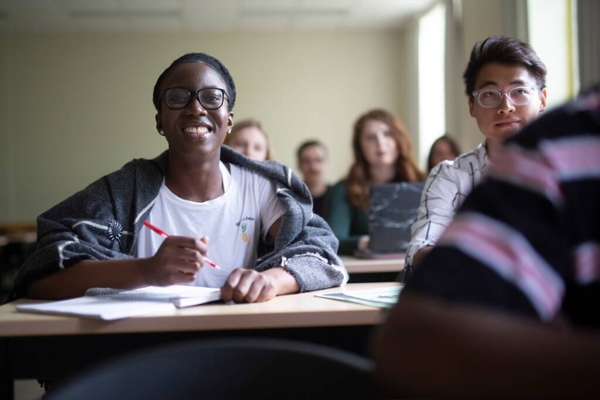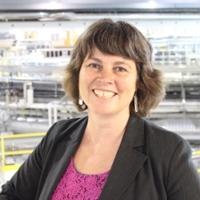
COVID and Canadian Post-Secondary Education
This issue of JSGS Policy Brief is part of a series dedicated to exploring and providing evidence-based analysis, policy ideas, recommendations and research conclusions on the various dimensions of the pandemic, as it relates here in Canada and internationally.
By Ken Coates, Canada Research Chair in Regional Innovation, Johnson Shoyama Graduate School of Public Policy, University of Saskatchewan; Carin Holroyd, Associate Professor of Political Studies, University of SaskatchewanThe Coronavirus pandemic has, to put it mildly, sent the Canadian college, polytechnic and university system into a tailspin. Face-to-face instruction has been cancelled. Most institutions migrated the last part of the instructional year online and will do the same with Spring semester. Student residents are almost all empty. The crisis is real.
The future looks equally uncertain. It’s now unlikely classes will start as per normal in September. International student recruitment, central to the budgets of most institutions, is uncertain: Will Canada allow more international students into the country? Once the virus ravages the developing world, will families have the money to fund advanced education in North America?
At this point, Canadian post-secondary institutions are wrestling with what to do to restart their programs. For graduate students and those in some professional fields, the shift to online learning makes sense. Mature and dedicated students with a clear focus on their discipline, program, or credential have a decent chance of completing their studies. For students fresh out of high school or those re-entering education after years away, online instruction is unlikely to be successful.
Alex Usher, the insightful President of Higher Education Strategy Associates, produces a daily blog that is essential reading on post-secondary education. In a recent blog, he pondered at length the prospect of using a multi-university collaboration to build a national online strategy as a partial solution to the 2020-2021 Coronavirus crisis.
While Usher’s creative thinking is admirable, it is likely that resorting to online instruction for first-year students would be a disaster. Most first-year students need a softer introduction to post-secondary education than they would get sitting at a computer screen at home. The problems go deeper. Beyond the obvious challenges of getting courses and programs ready for September, institutions offering their studies online will have trouble getting students to enroll and, for those who sign on, keeping them engaged.
Without sizeable first year classes and large numbers of international students, institutions face a financial challenge of generational consequences. Perhaps provincial governments will come up with the hundreds of millions of dollars needed, but it is unlikely. Even as short-term measures are implemented, the reality is that major cuts may still be required.
Given the immediate collapse in the job markets, young adults have few options. Not finding a summer job will constrain finances and parental income could collapse. They will, perhaps in historically high numbers, want to go to college, polytechnics and universities. Governments struggling to cope with historically high rates of youth and general unemployment will be eager to keep them off the rolls and, ideally, preparing themselves for the revitalized economy, hopefully in 2021.
Staring a formidable, potentially long-term crisis in the face, institutions and their faculty, staff and students have to consider all realistic alternatives. There is an inherent conservativism in the system and a desire to revert to the standard and well-known approaches, starting with a preference to launch semesters in September or January. But traditional approaches are unlikely to serve in this situation.
Changing the approach for the 2020-21 academic year is urgently required. Here’s one idea. First, delay the start of face-to-face instruction until January 2021. Secondly, reposition the academic year from September to April to January to August (given the economic crisis, there may be few jobs for students in summer 2021, so the loss of opportunities will be minimal). Third, adjust student loan and bursary programs to include a 12-month (September 2020 to August 2021) academic year. Fourth, 3rd and 4th year and graduate students would study online, starting in September and using a combination of face-to-face and online learning as permitted. Laboratory and practical learning would be held for an anticipated restart of classes in January 2021, with programs adjusted accordingly.
This approach would leave a large and critical gap: the September to December 2020 semester. The focal point here, given the above, would be on first- and second-year students. Instead of a full academic semester, this period would be devoted to what companies call “on-boarding,” preparing junior students for the training to come. Instead of short and largely ineffective orientation days, institutions would offer students an extensive and mandatory preparatory and adjustment sessions.
There could be multiple sessions on writing, career planning, study skills, on-line and library research, math practise, job market evaluations, program and Faculty-specific background work, and student counselling and advising. These would be offered online, provided in interactive formats where appropriate, moving to face-to-face when possible. Students would be required to attend 20 hours per week, with approximately the same time commitment to “out of session” work.
This approach would accommodate international students, provided the Government of Canada makes a commitment to providing visas to students accepted into and enrolled at the institutions. The special programming in September – December 2020 would, for international students, provide extended sessions on immigration and visa matters, adaptation to Canada and to community, postgraduation work opportunities, budgeting and other considerations.
There is near unanimity that the university system does not do enough to prepare incoming students for their academic and training careers. The recommended approach would provide institutions with income, an opportunity to help incoming students, and more than enough work to keep faculty and staff members fully and productively occupied. In the process, Canada’s colleges, polytechnics and universities might learn about how to better prepare incoming and junior students for their studies and for the world of work that follows.
Download the Policy Brief pdf.
ISSN 2369-0224 (Print) ISSN 2369-0232 (Online)
Ken Coates

Ken Coates is Canada Research Chair in Regional Innovation, Johnson Shoyama Graduate School of Public Policy, University of Saskatchewan. He is also the Project Director of the Aboriginal Canadians and the Natural Resource Economy for the Macdonald-Laurier Institute, a national think-tank. He has worked in a variety of fields from world history and Indigenous history to regional economic development and the impact of technology on society.
Carin Holroyd

Carin Holroyd is an Associate Professor Political Studies, at the University of Saskatchewan. Carin received her Bachelor of Arts (Asian Studies) from the University of British Columbia. After working in Japan and British Columbia for a few years, she completed a Masters of Science (Japanese Business) from Chaminade University (Hawaii) and Sophia University (Japan). She subsequently enrolled in the PhD program in Political Science at the University of Waikato in Hamilton, New Zealand, working under the direction of Dr. Alan Simpson, a highly respected New Zealand political scientist.

